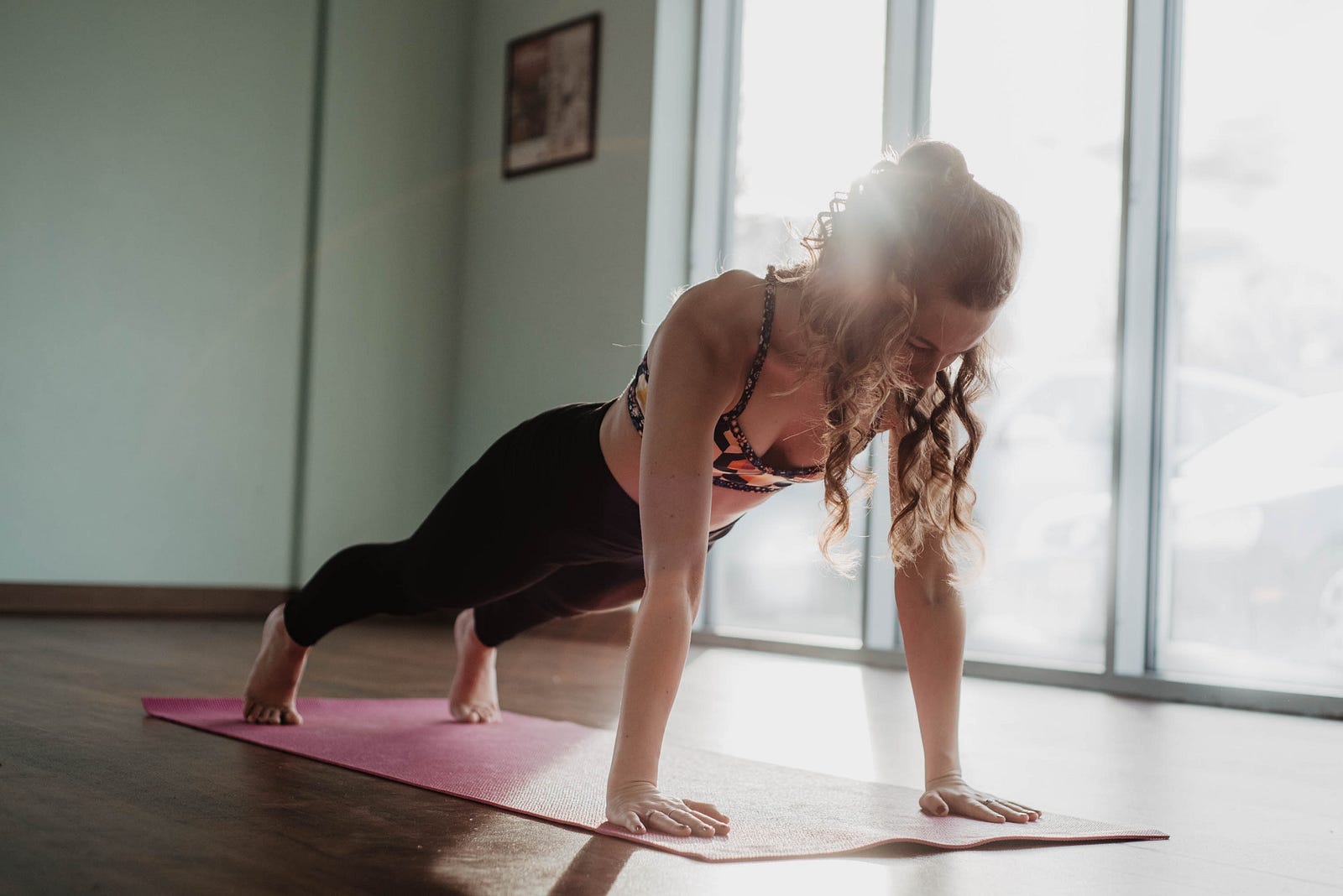OUR LIFESTYLE CHOICES ARE TIED TO HEALTH AND LIFESPAN. I often focus on aerobic activity, diet, rest (including sleep and mindfulness), and avoiding tobacco and excess alcohol. This essay will focus on resistance training. Beyond crunches: 5 workout tweaks for a lifetime of health.
Our fitness routines are crucial for a healthier and longer life. In this article, I will delve into five workout tweaks that I use to pave the way to a lifetime of health.
More specifically, I want to explore the benefits of four adjustments I made to my workout routine:
- Resistance training at least twice a week
- Incorporating compound exercises
- Engaging smaller muscles
- Getting adequate rest
- I get sufficient protein.
Let’s get to my 5 workout tweaks.
1. I Use The Power of Resistance Training
I always incorporate some aerobic training into my day. Walking is the cornerstone of my well-rounded fitness routine.
Many associate cardio workouts with heart health, but resistance training offers unique advantages.
Weight training helps build and maintain lean muscle mass and contributes to bone density, which is particularly crucial as we age.

We all should be concerned about significant bone loss or osteoporosis.
Approximately eight million women (and two million men) in the United States have osteoporosis. That translates to nearly one in five women and one in 20 men over 50.
Moreover, osteoporosis is associated with over two million fractures annually, and the number is rising.
Six out of 10 people who break a hip don’t recover their previous independence level. For many, simply walking across a room without help is impossible.
My Weightlifting Session Today
Today, I had a weightlifting session with my trainer, Jeff. Legs day is an absolutely brutal workout.
By doing resistance training (with resistance bands, bands, or bodyweight exercises), I challenge my muscles in ways that cardio alone can’t achieve.
Resistance training-induced stimulation strengthens my muscles and boosts my metabolism, aiding in weight management and promoting overall vitality.
I aim for at least two weekly training sessions to maximize my resistance training benefits. As I train for a Master’s bodybuilding competition, I weight train five days weekly.
These sessions don’t have to be lengthy; even a 30 to 60-minute workout — focusing on different muscle groups — can significantly impact my long-term health.
2. I Use Compound Exercises for Efficiency
Now, let’s shift our focus to compound exercises — an efficient and effective way to maximize my workout time.
Unlike isolation exercises that target specific muscles, compound exercises engage multiple muscle groups simultaneously.
Incorporating compound exercise into my routine saves time and promotes functional strength, which is crucial for daily activities.
Other Benefits of Compound Exercises
I take advantage of the fact that compound exercises efficiently use my time.
Other benefits include:
- burning more calories
- improving intramuscular coordination
- raising my pulse
- improving flexibility
- improving strength
- gaining muscle mass
Examples of Compound Exercises
Examples of compound exercises include deadlifts, squats, pull-ups, and bench presses.
Compound movements recruit a variety of muscles, promoting better coordination and balance.
Benefits, 6 Examples, Safety Tips
Compound exercises are a great way to work multiple muscles in a short amount of time. www.healthline.com
Additionally, the increased muscle engagement leads to a higher calorie burn, contributing to weight management and overall cardiovascular health.
Incorporating compound exercises into your routine doesn’t mean abandoning isolation exercises altogether. Instead, striking a balance between the two can create a well-rounded and effective workout plan.
3. I Target Small Muscles for Big Gains
While compound exercises are essential, paying attention to smaller muscle groups often overlooked is equally important.
Muscles like the rotator cuff in the shoulders, the stabilizing muscles in the core, and those around the ankles and wrists play a crucial role in overall stability and injury prevention.
Incorporating exercises targeting these smaller muscles can enhance your overall fitness and reduce the risk of imbalances and injuries.

Simple additions like lateral raises, planks, and ankle circles can go a long way in maintaining joint health and promoting longevity in your fitness journey.
4. I Rest
I always take two days off from intense exercise each week.
This recovery time allows me to get my blood flowing to help with muscle repair.
On “off” days, I engage in brisk walks several times. I also try to get into some mindfulness meditation (and occasional yoga).
I do not push my body too much on these rest days; rather, I focus on low-intensity movements.
5. I Consume Sufficient Protein
The Mayo Clinic (USA) offers some guidance about protein consumption.
Ten to 35 percent of your calories should come from protein. If you need 2,000 calories, that translates to 200 to 700 calories from protein (or 50 to 175 grams).
The recommended dietary allowance to prevent deficiency for an average sedentary adult is 0.8 grams per kilogram of body weight. For example, a person weighing 165 pounds or 75 kilograms should consume 60 grams of protein daily.
From ages 40–50, sarcopenia (muscle loss) begins. Your protein needs to rise (1 to 1.2 grams per kilogram or 75 to 90 grams per day) for a 75-kilogram person to reduce muscle loss.
Those who exercise regularly have higher protein needs; 1.1 to 1.5 grams per kilogram is a reasonable goal for most.

How I Consume Protein
I aim for 15 to 30 grams of protein at each meal. Consuming over 40 grams in one sitting does not benefit me more than 15 to 30 grams.
I don’t want to waste my money on excessive protein.
I use plant sources when possible. Examples include nuts, seeds, soy, beans, and lentils.
I also use lean meats (my go-to is skinless, white-meat chicken or turkey). I add in some low-fat dairy.
Finally, twice a week, I try to eat seafood (such as tuna or salmon).
I try to get as much protein as possible from these “natural” sources; manufactured foods don’t contain everything I get from food.
Exercise Regularly? Your Protein Needs Are Higher.
People who exercise regularly also have higher needs, about 1.1 to 1.5 grams per kilogram.
Because I am in an intense training phase, I aim for 1.2 to 1.7 grams per kilogram. The Mayo Clinic offers that excessive protein intake would be more than two grams per kilogram of body weight each day.
Final Thoughts — 5 Workout Tweaks
In conclusion, moving beyond traditional crunches opens up a world of possibilities for a lifetime of health.
Incorporating resistance training at least twice weekly, embracing compound exercises, and focusing on smaller muscle groups can revolutionize your fitness routine.
As with any lifestyle change, it’s essential to consult with a healthcare professional or fitness expert before making significant adjustments to your exercise routine.
Be Consistent
Consistency is key, and these tweaks enhance — not replace — the elements of your current workout regimen.
By prioritizing resistance training, incorporating compound exercises, and engaging smaller muscle groups, you’re not just sculpting your physique; you’re investing in the longevity of your health.
And don’t forget to get adequate protein and rest.
So, lace up those sneakers, grab those weights, and embark on a fitness journey that transcends the ordinary, paving the way for a lifetime of vitality.
What is your resistance training approach? Do you have a protein strategy?
Thank you for reading “5 Workout Tweaks.“

























